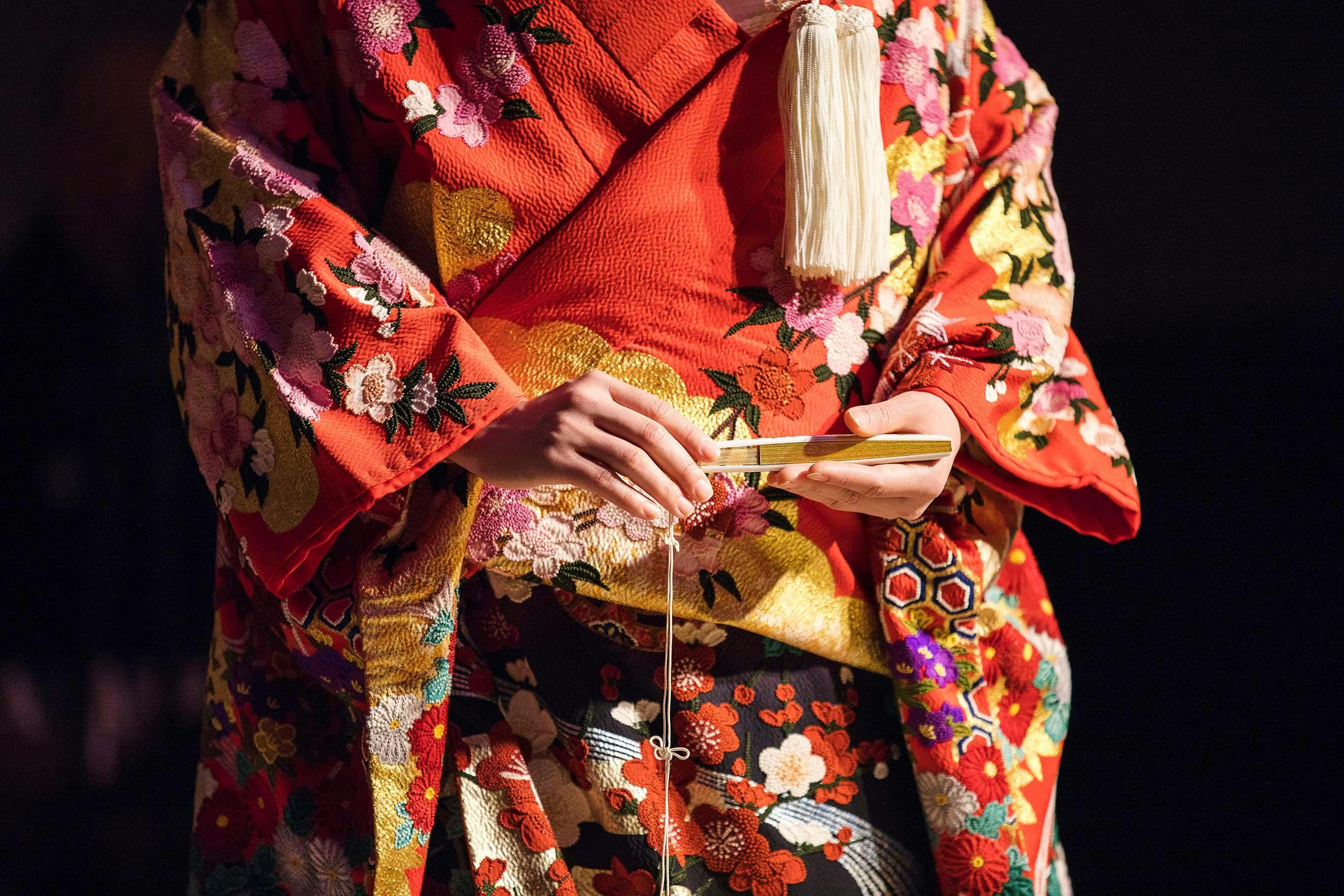The Rituals Behind Japanese Wedding Ceremony Traditions
Meiji Shrine in Tokyo is one of the most important shrines in Japan, built to commemorate the Meiji Emperor and Empress Shoken. It is one of the most sacred Shinto sites in the city and, occasionally, host to the pageantry and beauty of Japanese wedding ceremony traditions. On a recent visit, I was lucky enough to glimpse these Japanese marriage customs. I had ambled through the towering oak, cypress and camphor trees that line the path before crossing through the enormous torii, the gate between the gods’ and the human realms. I paused to wash my hands and rinse my mouth at the font by the gate, symbolically cleaning my heart and mind to enter the sacred space.
Turning toward the shrine, I glimpsed a splendid procession of about a dozen brilliantly bedecked members making its way across the elegant grounds.
Priests in tall headgear led the way, followed by shrine maidens in vermillion and white. Then came a dashing groom in full kimono and a bride resplendent in a Shinto wedding dress, with an elaborate headpiece shaded by a red lacquered parasol, trailed by their kimono-wearing attendants.
This is a Shinto wedding procession.
Shinto in secular society
Shinto is a polytheistic religion with a strong emphasis on nature and a belief that kami, or gods, exist all around us, in things like rocks, trees, rivers, animals and people.
According to a survey by NHK, the country’s national broadcasting organization, 39 percent of Japanese people said they belonged to a particular religion, with 34 percent citing Buddhism and 3 percent identifying as Shinto in 2008. Still, the customs, rituals and traditions of religion in Japan remain so intertwined with culture that many people participate in them without overtly claiming a particular faith. The same survey shows that over 90 percent of people have visited a shrine for “Hatsumode,” or the first shrine visit in the new year.
It’s also common to visit a shrine to pray for health and success when marking major milestones. In January, for example, you’ll see young people in kimono thronging the shrines around Coming of Age Day. In November, most Japanese families observe 7-5-3 Day, and kids of those ages dress up and visit a Shinto shrine to mark passage through childhood. Many couples also choose to marry “before the gods” (Shinzenshiki) incorporating Japanese marriage customs in a Japanese Shinto wedding ceremony.
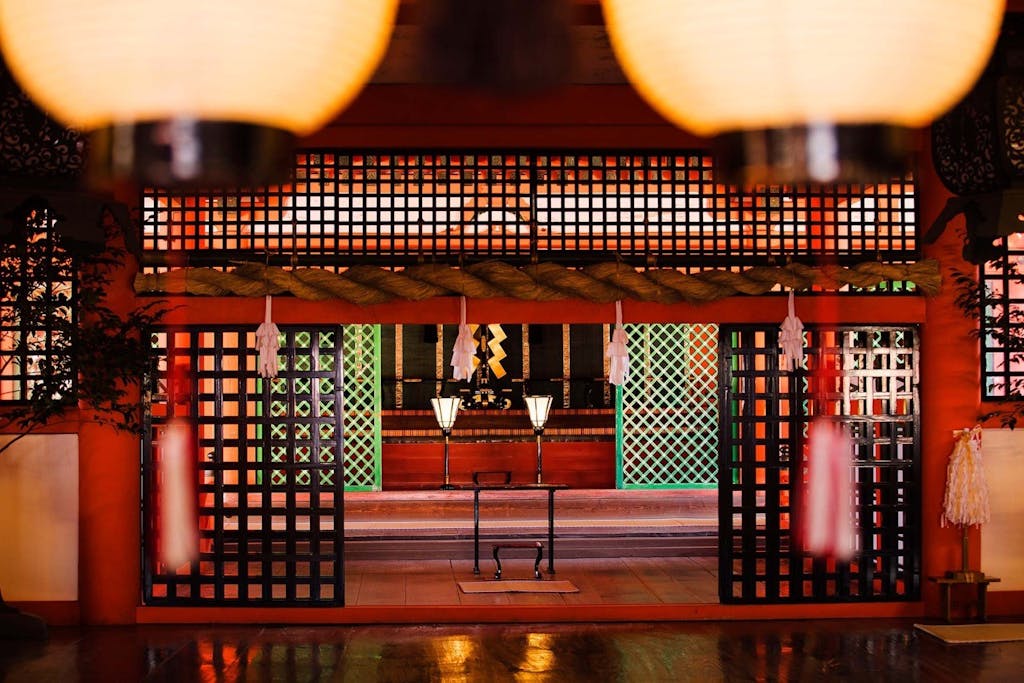
When choosing a date for the event, Japanese wedding ceremony traditions call for picking an auspicious day according to the rokuyo, or six-day calendar, which is based on the old lunisolar calendar. Each date is assigned one of six ratings, with some ratings more auspicious than others when it comes to significant events. Many couples choose the luckiest “taian” or “great safety” day for their ceremony, though some opt for a less fortunate day to save money as taian days are in high demand.
The intricate Japanese wedding kimono
Once the couple has chosen the date and the shrine, it’s time to prepare the wardrobe for the big day. Traditional Japanese wedding kimono are elaborate, and most people require a licensed kimono professional to help them get ready for the wedding ceremony.
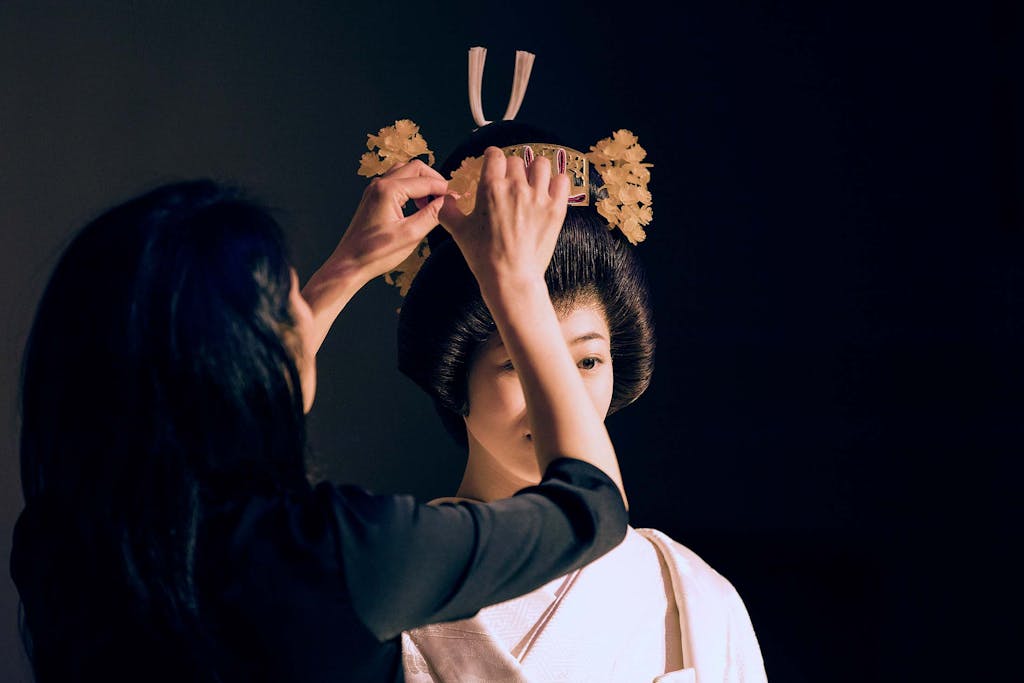
Kazuko Ishida, a kimono expert and teacher at Nishijin Textile Center, has been working in the kimono industry for 30 years. She says it takes four to five years of practice to become skilled at dressing a bride.
Perhaps the bride’s most prominent costume element is the voluminous headpiece. She can choose either the wataboshi (a hooded veil) or a tsunokakushi (a headband with a name that literally means “hides her horns”). Ishida explains that, according to Japanese folklore, a woman sprouts a pair of horns when she marries. They represent feelings like anger and jealousy, so in Japanese wedding ceremony traditions the headpiece is meant to symbolize the bride’s restraint of such emotions.
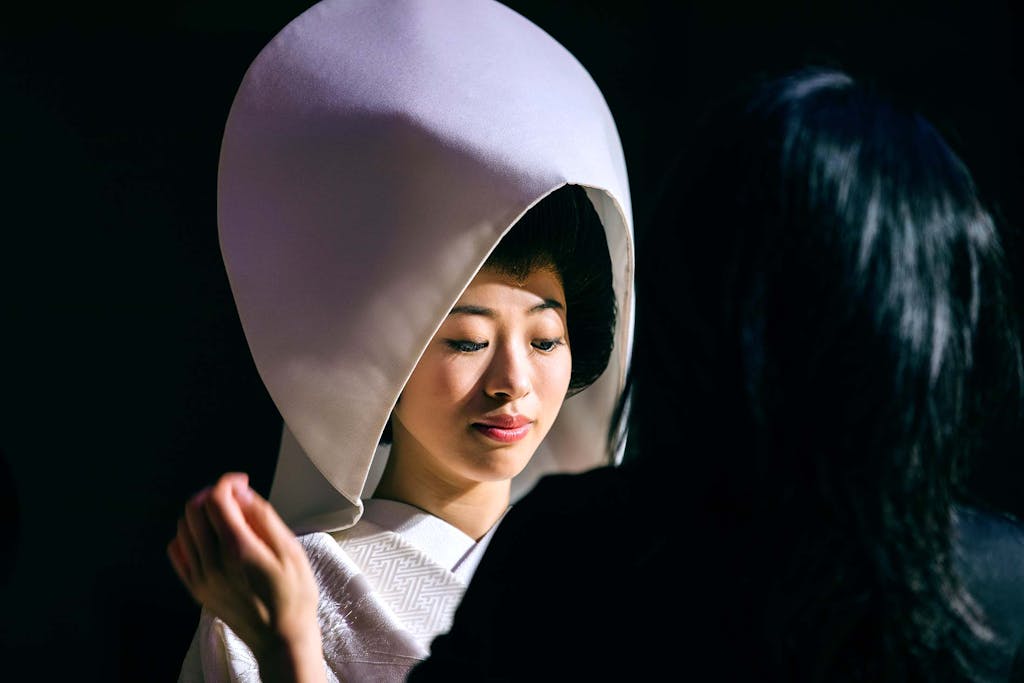
The bride can also choose between a pure white uchikake (bridal robe) and a colorful one, usually with red and gold accents, not unlike traditional geisha attire. An intricately embroidered wide belt called an obi is wrapped around her waist, and she tucks a fan and a dagger (kaiken) with a case, a holdover from samurai days, into the folds of her robe.
“You put the dagger in the folds of your kimono to protect yourself,” explains Ishida. “But if you place the dagger itself without a case into your kimono, people would realize that you have it, so the case is to hide the dagger.”
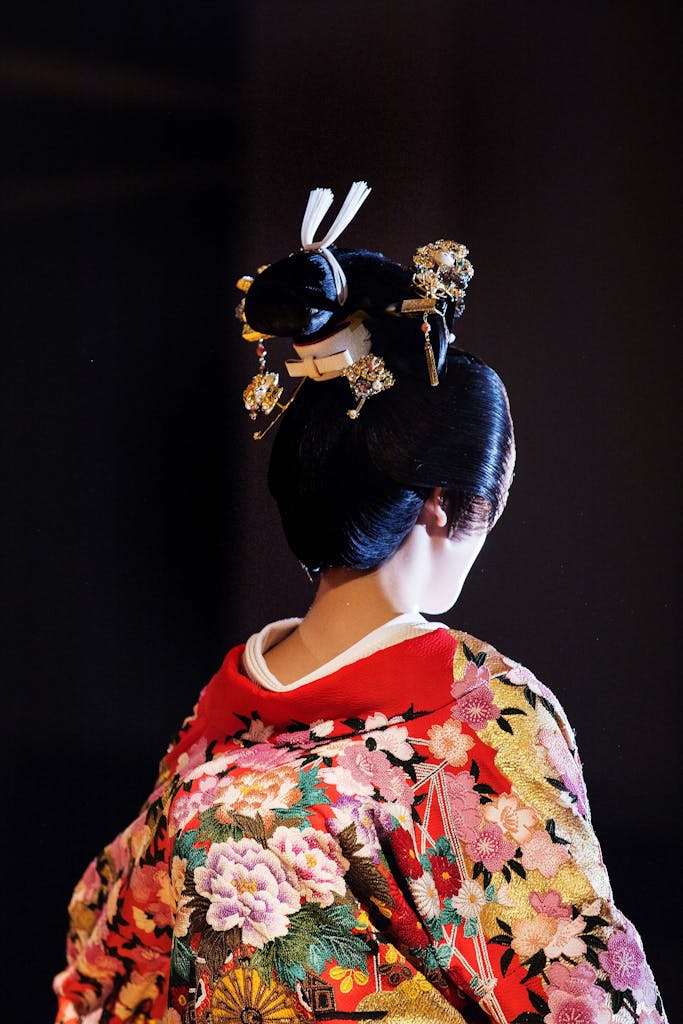
The groom wears a kimono with five silk-woven family crests on both the lining and the haoricoat. He wears a fine brocade obi, carries a fan and wears white split-toed tabi socks and zori sandals. Though his kimono is striking in its elegance, the colors are muted when he’s standing next to the bride.
Japanese wedding ceremony traditions
In a country known for its meticulous and storied artistic tradition, it’s no surprise that every aspect of Japanese wedding ceremony traditions, from the wedding kimono to the number of sips of sake consumed, has meaning and weight.
My own parents got married at Meiji Shrine in the 1970s, and I asked them about the ceremony. Once the wedding party arrives at the shrine and passes through the torii, the ceremony follows a prescribed set of rituals. They take a seat after the public procession across the grounds. Only those in the party, which usually consists exclusively of close family members, are admitted.
My mom remembers many of the uniquely Japanese marriage customs from her wedding day. There was an offering using a leafy branch of the sakaki tree, a Japanese evergreen. “In Japan, from the old days, it’s been said that ‘the gods dwell in plants,’ but especially in the sakaki tree, with its pointed branches,” explains a priestess from Wakamiya Hachiman Shrine in Kawasaki. “‘Sakaki’ is similar sounding to the word ‘sakai’ or boundary, and it’s also said that the name of the tree was made to reflect that the tree is a boundary in the space between gods and people.”
Next, the priest reads an incantation called norito soujou that appeals to the gods to lend the couple strength. A miko (shrine maiden, or, more literally, “female shaman”) then performs a ceremonial dance to please the gods. Finally, the couple drinks sake in a ceremony called san-san-ku-do, or three-three-nine, taking nine alternating sips from three cups of sake. My mom remembers this as a unity ritual, with the number 3 being fortuitous.
“This is a ceremony to show that even if you drink a lot of sake together, your oaths will not change,” says the Wakamiya Hachiman priestess. This is followed by oaths, a sakaki offering by the couple, a ring exchange and finally a toast by family members.
“Our role is nakatorimochi,” says the Wakamiya Hachiman priestess. “That is, the shrine does not bless the couple, but rather, we are the go-between in communicating the feelings of the couple to the gods.”
It’s inevitable that the horns will come out now and then, for both spouses. But hopefully, with the support of the gods, the couple will persevere.
Do you enjoy observing cultural rituals when you travel? On a Silversea cruise in Asia, opportunities abound — in Japan and beyond.
